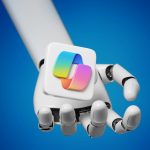
Duolingo CEO Claims AI Could Outperform Human Teachers in Education
4 minute read

Language Learning Giant Sees AI Teachers Surpassing Humans as Platform Reaches 40M Daily Users
Key Facts
- Duolingo boasts 40.5 million daily active users and 9.5 million paid subscribers as of Q1 2025
- The company launched 148 new language courses through AI-powered content creation
- South Korea has implemented AI-powered digital textbooks in 30% of schools
Introduction
Duolingo CEO Luis von Ahn has sparked controversy by declaring artificial intelligence a potentially more effective educator than human teachers. His stance highlights a significant shift in educational technology, where AI-driven platforms increasingly challenge traditional teaching methods through personalized learning experiences and instant feedback capabilities.
Key Developments
Duolingo has embraced an “AI-first” strategy, integrating artificial intelligence across its entire platform. The company now uses AI for lesson delivery, content creation, and internal operations, including hiring and performance evaluations. This transformation has led to a reduction in contractor roles as AI assumes responsibilities previously handled by humans.
The platform’s success is evident in its rapid expansion, with AI enabling the simultaneous launch of 148 language courses – a feat impossible through traditional manual development. This scaling demonstrates AI’s potential to revolutionize educational content creation and delivery.
Market Impact
The adoption of AI-driven education extends beyond Duolingo. South Korea’s implementation of AI-powered digital textbooks in 30% of its schools represents a broader trend toward technology-enhanced learning. These developments suggest a growing acceptance of AI as a core component of modern education.
Duolingo’s robust user metrics – 40.5 million daily active users and 9.5 million paid subscribers – indicate strong market validation for AI-enhanced learning platforms. The company’s ability to scale offerings without proportional increases in labor costs has improved operational efficiency and margins.
Strategic Insights
Von Ahn acknowledges that traditional schools will persist, primarily due to their essential childcare function. He envisions a future where schools evolve into supervised spaces while AI handles most educational tasks. This perspective suggests a fundamental shift in how we conceptualize educational institutions.
The company’s strategy aligns with broader trends in educational technology, where AI’s ability to track individual student performance and adapt lessons in real-time addresses limitations of traditional classroom teaching.
Expert Opinions and Data
Education experts remain divided on AI’s role in teaching. While some praise its potential to democratize quality education globally, others express concern about diminishing the value of human teachers. Critics emphasize that AI cannot replicate the emotional support and complex socialization provided by human educators.
The debate has intensified since ChatGPT’s release in 2022, with students emerging as early adopters while educational institutions struggle to adapt. Online communities, particularly on Reddit, have voiced mixed reactions to von Ahn’s views, highlighting tensions between technological innovation and traditional educational values.
Looking Forward
The integration of AI in education continues to evolve, with Duolingo’s approach representing one model for the future. While AI demonstrates clear advantages in scalability and personalization, the transition faces challenges including government regulations, established systems, and cultural expectations. The balance between AI efficiency and human interaction remains a critical consideration in shaping educational futures.





